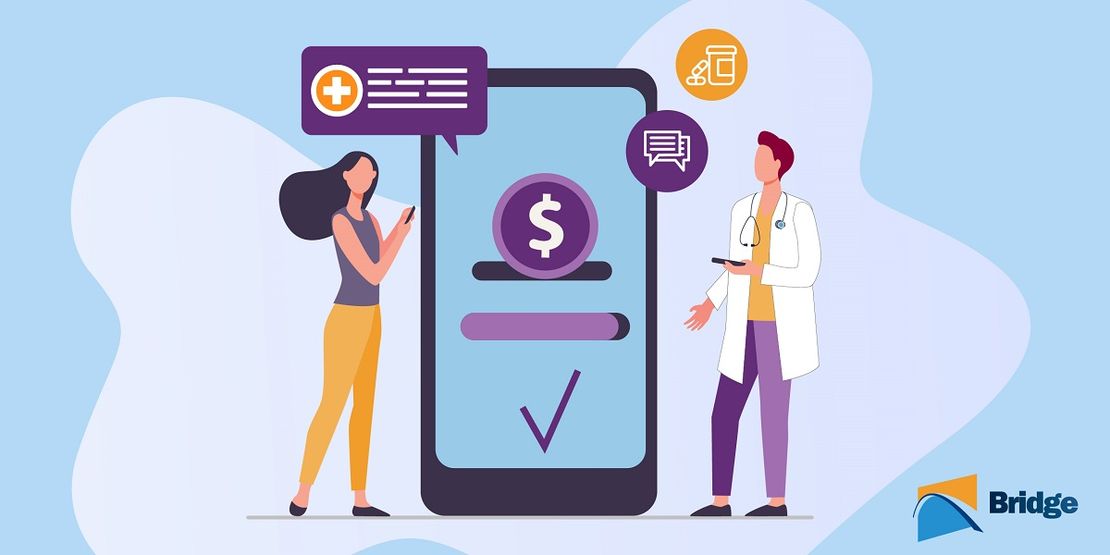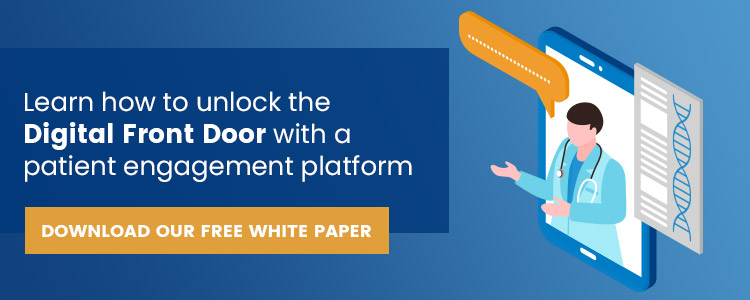Can Providers Charge For E-Messaging With Patients?
- Kortney Orueta
- July 14, 2023

Healthcare communication underwent something of a revolution during the COVID-19 pandemic, as medical providers quickly sped up their adoption of modern technology for patient communication purposes. Telehealth became the order of the day, with physicians and other healthcare staff members spending more time each day handling communication requests via patient engagement platforms such as BridgeInteract. While patient communication platforms save healthcare organizations time and money by reducing time spent on the phone or on paperwork, the fact remains that physicians still spend valuable time on electronic messaging, such as answering patients’ emails, now more than ever before. They can—and should—charge for this time just like any other service.
Impact Of Increased Patient Portal Use On Doctors
One Dr. Micheal Stillman, MD, reported that the uptick in patient messaging following the pandemic has been so overwhelming that he suffered considerable inbox-related stress and burnout ¹. In his story, he consulted colleagues, all of whom suggested different different coping strategies, but he rejected any method that would detract from the patient experience (slower or more terse replies) in favor of communicating a clear set of e-messaging guidelines to his entire patient roster. This approach led to a significant reduction in his administrative burden, and services as a good example of a transparent method for moderating online patient interaction.
Healthcare providers should follow by clearly communicating expectations for electronic communication protocols and billing based on what is legal and reasonable. But what exactly does that mean? Let’s take a look.
Is It Legal To Charge Patients For Electronic Healthcare Communication?
The answer is, yes.This was explicitly laid out by the Centers for Medicare & Medicaid Services (CMS) in 2020, when it updated its rules covering telehealth visits to allow healthcare providers to bill for eVisits, which include healthcare communications via online patient portals like BridgeInteract—with the important qualifier that these communications must be initiated by the patient ².
The rules set out by the federal government state that a billable message must:
- be in response to a patient inquiry,
- require at least five minutes, including for research and drafting, which effectively qualifies it as a virtual visit
- include an online assessment and management of medical conditions.
In addition, the provider must have an established relationship with the patient. The billable correspondence can take place over a seven-day period, so all the back-and-forth between patient and provider in that time can be included in a single bill.
Following these clarifications from the CMS, many US healthcare organizations are implementing billing policies for answering patients’ emails or patient portal messages.

What Kinds Of Patient Communication Can You Bill For?
As more healthcare institutions adopt billing policies for the use of patient communication platforms at their own discretion, a standardized set of billable actions has yet to emerge, but for clarity, you should inform patients to obtain their consent for telehealth services and detail which particular types of communications will be billed.
This communicates expectations to patients so they do not receive “surprise” billings. Generally speaking, patients as consumers will be more satisfied with their bills if they understand they are being billed for the physician’s time, not for vague or arbitrary reasons.
It will reassure physicians that they are being appropriately compensated for their time and effort, encouraging them to set aside part of their workday to answer electronic patient communications.
Bearing in mind the above mentioned CMS rules for the billing of electronic communication, it is a good rule of thumb to list the types of patient communication that are likely to require more than five minutes of physician attention.
As a guideline, we can look to early adopters such as the Cleveland Clinic and the University of California, San Francisco (UCSF) Medical Center, which notified patients that they might be billed for the following types of messages ³⁴:
- New symptoms
- Changes or flare-ups in a long-term condition
- Checkups on care for a long-term condition
- Changes to prescribed medications
- Requests to complete medical forms
On the other hand, these guidelines reassure patients that they won’t bill for other types of messages, such as:
- Scheduling an appointment
- Prescription refills
- Asking a question that leads to an appointment
- Asking a question about an issue for which a patient saw a provider in the last seven days
- Checking in as a part of follow-up care after a procedure
- Quick updates to a provider that do not require a response
It is important to note that, depending on your choice of patient portal solution, some actions may be automated to avoid taking up the physician’s time. For example, BridgeInteract supports not only automated appointment scheduling via the patient portal, but also automated reminders to attend appointments or complete medical forms via SMS, secure messaging, or push notification, eliminating the need to spend doctor time on these tasks.
What Do Patients Think Of Being Billed For Electronic Healthcare Communication?
Studies consistently find that patients, on the whole, find electronic communication methods such as SMS, email, and secure patient portal messaging useful and report higher levels of satisfaction and engagement with their own healthcare ⁵⁶⁷.
Using technology to facilitate “asynchronous telemedicine,” or people reaching out to their physician with an email and doctors responding later, also means less time wasted commuting to the clinic, sitting in the waiting room, or being on hold in a telephone queue. While patients have voiced concerns about whether the use of the patient portal is billable or not, clearly communicating expectations to the patients will help them understand the rules and appreciate how your patient portal saves them valuable time⁸.
A comprehensive patient engagement platform, such as BridgeInteract, will streamline the process by integrating secure HIPAA-compliant messaging with automated processes for appointment scheduling, prescription refills, intake, and reminders to fill forms. BridgeInteract also integrates easy-to-understand billing and payments, providing further convenience and clarity for all parties. Consumers, including patients, are willing to pay for value, and a good patient portal solution should make it simple to do so.
To book a demo or discuss how BridgeInteract can help you boost staff efficiency and patient satisfaction, contact us and take your patient engagement strategy to the next level.
- Stillman M. (2023). Death by Patient Portal. JAMA. Published online at: https://jamanetwork.com/journals/jama/fullarticle/2807107f
- Centers for Medicare & Medicaid Services. (2020). Medicare Telemedicine Health Care Provider Fact Sheet. Available at: https://www.cms.gov/newsroom/fact-sheets/medicare-telemedicine-health-care-provider-fact-sheet
- Cleveland Clinic. (2020). MyChart Messaging. Available at: https://my.clevelandclinic.org/online-services/mychart/messaging#msdynttrid=bAU8cKe-602S6wFIwSYop1KQswRcT2b2F5mRJ-92OEc
- UCSF Health. (2021).Medical Advice Through MyChart Messages: How It Works and What It Costs. Available at: https://www.ucsfhealth.org/mychart/medical-advice-messages
- Wade-Vuturo, A. E., Mayberry, L. S., & Osborn, C. Y. (2013). Secure messaging and diabetes management: Experiences and perspectives of patient portal users. Journal of the American Medical Informatics Association: JAMIA, 20(3), 519-525. Available at: https://doi.org/10.1136/amiajnl-2012-001253
- Haun JN, Patel NR, Lind JD, Antinori N. (2015). Large-Scale Survey Findings Inform Patients’ Experiences in Using Secure Messaging to Engage in Patient-Provider Communication and Self-Care Management: A Quantitative Assessment. Journal of Medical Internet Research;17(12):e282. Available at: https://pubmed.ncbi.nlm.nih.gov/26690761/
- Haun, J. N., Lind, J. D., Shimada, S. L., Martin, T. L., Gosline, R. M., Antinori, N., Stewart, M., & Simon, S. R. (2014). Evaluating User Experiences of the Secure Messaging Tool on the Veterans Affairs’ Patient Portal System. Journal of Medical Internet Research, 16(3). Available at: https://doi.org/10.2196/jmir.2976
- Sieck, C. J., Hefner, J. L., Schnierle, J., Florian, H., Agarwal, A., Rundell, K., & McAlearney, A. S. (2017). The Rules of Engagement: Perspectives on Secure Messaging From Experienced Ambulatory Patient Portal Users. JMIR Medical Informatics, 5(3). Available at: https://doi.org/10.2196/medinform.7516